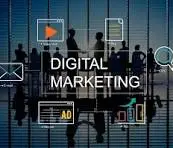
Digital marketing, also referred to as online marketing, is the process of promoting businesses over the internet. This encompasses a variety of strategies and techniques aimed at increasing visibility, engagement, and sales through digital channels. In India, the digital transformation is still in its early stages, with only about 35% of the population currently online. However, this percentage is expected to grow significantly, making digital marketing an increasingly critical component for businesses looking to reach and engage with their target audiences.
May You Like : https://idigiminds.com/digital-marketing/
Services in Digital Marketing
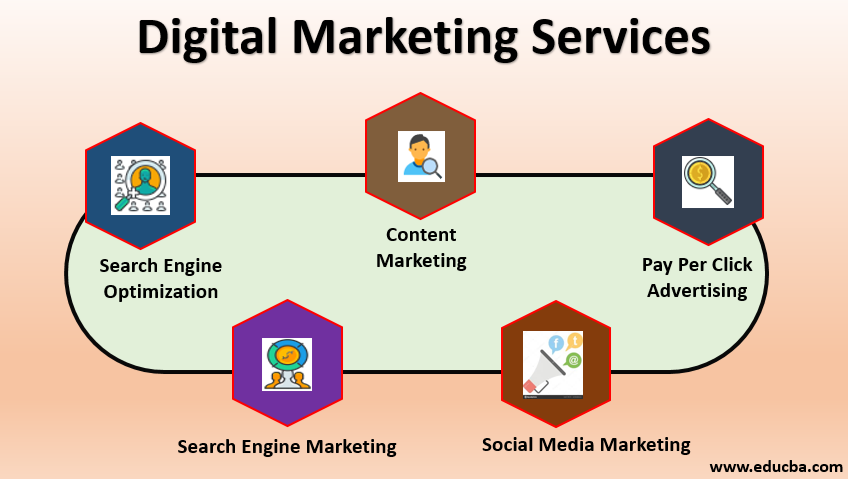
Digital marketing encompasses a range of services, each designed to target specific aspects of online presence and engagement. Key services include SEO, PPC, Social Media Marketing, Content Marketing, and Email Marketing.
SEO (Search Engine Optimization)
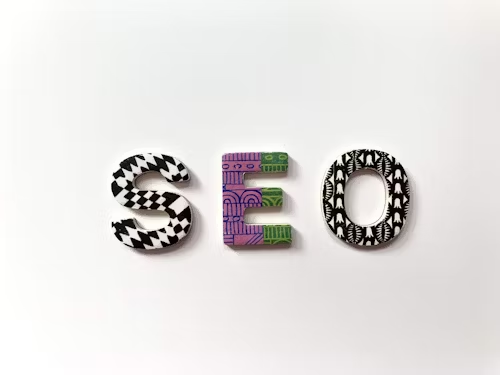
SEO is the practice of optimizing a website to rank higher in search engine results, thereby increasing the quantity and quality of traffic to the site. The primary goal of SEO is to attract organic (non-paid) visitors by making a website more visible and appealing to search engines.
Key Components of SEO:
- Keyword Research: This involves identifying the words and phrases that potential customers use when searching for products or services online. Effective keyword research helps businesses understand what their target audience is looking for and optimize their content accordingly.
- On-Page SEO: This focuses on optimizing individual web pages to rank higher and earn more relevant traffic. Key elements include meta titles, meta descriptions, header tags, and content that includes targeted keywords.
- Off-Page SEO: This involves activities conducted outside of the website to improve its search engine rankings. The primary strategy here is building backlinks from reputable sites, which signals to search engines that the website is trustworthy and authoritative.
- Technical SEO: This aspect of SEO ensures that a website meets the technical requirements of modern search engines. Key components include improving site speed, mobile-friendliness, indexing, and crawlability.
- Local SEO: This targets local search results by optimizing the website for location-based searches. It involves claiming and optimizing business listings on local directories and maps services.
- Content SEO: This focuses on creating high-quality, valuable content that attracts and engages the target audience. This can include blog posts, videos, infographics, and other types of content that answer user queries and solve their problems.
PPC (Pay Per Click)
PPC is a model of internet marketing in which advertisers pay a fee each time one of their ads is clicked. It is essentially a way of buying visits to your site rather than attempting to earn those visits organically.
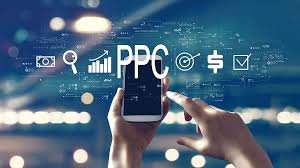
Main Components of PPC:
- Keyword Research: Identifying and targeting keywords that potential customers are likely to use when searching for products or services. Effective keyword targeting ensures that ads are shown to the right audience.
- Ad Creation: Crafting compelling advertisements that include targeted keywords and are designed to attract clicks. This involves creating engaging copy and eye-catching visuals.
- Budget and Bidding: Setting a budget for the ad campaign and determining how much to bid for each click. Advertisers must balance the cost per click (CPC) with the potential return on investment (ROI).
- Landing Page Optimization: Ensuring that the landing page users are directed to after clicking an ad is optimized for conversions. This includes having a clear call-to-action (CTA), relevant content, and a user-friendly design.
Social Media Marketing (SMM)
SMM involves using social media platforms to promote products or services, engage with the audience, and build brand awareness. Social media offers a unique opportunity for businesses to interact with their customers in real-time and create a community around their brand.

Key Components of SMM:
- Choosing Social Media Platforms: Selecting the platforms that are most relevant to the business and its target audience. Popular platforms include Facebook, Instagram, Twitter, LinkedIn, and Pinterest.
- Content Creation: Developing a variety of content types, such as posts, images, videos, stories, and live videos, to engage the audience and promote the brand.
- Posting Schedule: Determining the optimal times and frequency for posting content to maximize engagement and reach.
Content Marketing
Content marketing involves creating and distributing valuable, relevant, and consistent content to attract and retain a clearly defined audience. The primary goal is to drive profitable customer actions by providing content that meets the needs and interests of the audience.

Key Elements of Content Marketing:
- Content Creation: Producing high-quality content that is relevant to the audience. This can include blog posts, videos, articles, webinars, infographics, and more.
- Content Distribution: Sharing content across various channels, such as social media, email marketing, websites, and blogs, to reach a broader audience.
- Targeting: Understanding and segmenting the audience to deliver personalized content that resonates with them.
- Analytics: Monitoring and analyzing the performance of content to identify what works best and optimize future content strategies.
Email Marketing
Email marketing is a powerful tool for maintaining direct communication with customers. It involves sending targeted emails to a list of subscribers to promote products, share news, and nurture customer relationships.

Key Elements of Email Marketing:
- Email List Building: Collecting email addresses from potential and existing customers through various methods, such as sign-up forms, contests, and lead magnets.
- Email Content Creation: Crafting engaging and relevant emails that include newsletters, promotional offers, updates, and personalized messages.
- Customization and Personalization: Personalizing emails based on customer preferences and behaviors to increase engagement and conversion rates.
- Email Scheduling: Sending emails at the right times to ensure they reach the audience when they are most likely to engage.
Benefits of Digital Marketing
Digital marketing offers numerous benefits for businesses looking to grow and thrive in the digital age.
Benefits of SEO:
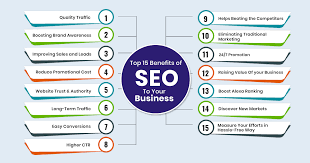
- Increase in Organic Traffic: Higher search engine rankings lead to more visitors and potential customers.
- Better User Experience: Improved site structure and usability enhance user engagement and satisfaction.
- Cost-effective Marketing: SEO is more affordable compared to paid advertising and offers long-term benefits.
- High Return Rate: SEO often provides a higher return on investment (ROI) by generating quality leads and conversions.
Benefits of PPC:
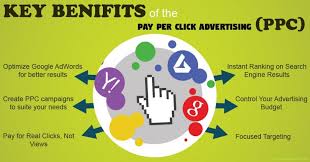
- Budget Control: Advertisers have complete control over their budget and only pay for actual clicks on their ads.
- Quick Results: PPC can drive traffic to a website almost immediately after launching a campaign.
- Targeted Advertising: PPC allows precise targeting based on keywords, location, demographics, and other criteria, ensuring ads reach the right audience.
Conclusion
Digital marketing is an essential strategy for businesses looking to compete and succeed in today’s digital landscape. By leveraging SEO, PPC, Social Media Marketing, Content Marketing, and Email Marketing, businesses can effectively reach and engage their target audiences, driving growth and profitability. As digital adoption continues to rise, businesses must stay ahead of the curve by implementing and optimizing these digital marketing strategies to remain competitive and meet the evolving needs of their customers.


Tracee Shoger
Hi, just a question: What’s the process for creating a robots.txt file to manage search engine crawlers?
Thersa Feagans
I really appreciate the depth of information you’ve provided here. It’s clear that you’ve put a lot of thought and effort into this post.
Hairstyles
Thank you for writing this post. I like the subject too.